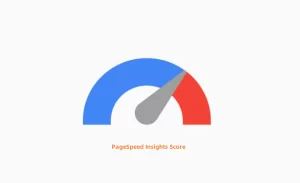In the constantly evolving world of search engine optimization (SEO), staying ahead of the game is crucial.
One tool that is often overlooked but can be incredibly powerful for optimizing your website’s performance is Google Trends. This free tool provides valuable insights into the popularity of specific search terms on both Google and YouTube.
By understanding how to use Google Trends effectively, you can gain a competitive edge and improve your SEO strategy.

In this guide, we will explore the various ways in which you can utilize Google Trends to boost your website’s visibility and drive organic traffic.
What is Google Trends?
Before we delve into the practical applications of Google Trends, let’s first establish a solid understanding of what this tool entails. Marketers and SEO professionals have relied on Google Trends since it was introduced in 2006.
It allows users to analyze the popularity of search terms over time and across different locations.
By visualizing search trends through data and graphs, Google Trends provides actionable insights that can inform keyword research, content creation, and overall SEO strategy.
Conducting Effective Keyword Research

Keyword research is a fundamental aspect of any successful SEO campaign. With Google Trends, you can take your keyword research to the next level. By entering a specific search term in the search box on the homepage, you can gain valuable insights into its popularity over time.
The default setting shows Google’s most popular keywords, but you can also switch to YouTube search data for more targeted results. By analyzing the popularity of keywords over the past year, you can identify emerging trends and avoid keywords that are declining in popularity.
This data can guide your content creation and help you optimize your website for the most relevant and high-performing keywords.
Uncovering Related Topics
In addition to discovering related search terms, Google Trends can also help you uncover broader topics that are currently trending. By exploring the “Related Topics” section on the left side of the page, you can gain insights into the overarching themes and subjects that people are searching for.
This can be immensely helpful in brainstorming new and trending ideas for your content creation. While you will still need to focus on specific keywords within these topics, the recommendations provided by Google Trends can serve as a starting point for your research.
By keeping your finger on the pulse of trending topics, you can create timely and engaging content that resonates with your target audience.
Discovering Related Keywords
One of the unique features of Google Trends is its ability to suggest related keywords that are currently gaining popularity. These related keywords can provide valuable insights into what users are searching for and help you identify more relevant and specific keywords to target.
When you enter a search term, Google Trends generates a list of closely related keywords in order of their popularity. This list can serve as a treasure trove of keyword ideas for your content creation and optimization efforts.
Keep an eye out for keywords labeled as “Breakout,” as these are experiencing a significant increase in search volume. Take advantage of these emerging trends to position your website at the top of search results before your competitors do.
Contextualizing Trends for Accurate Analysis
When using Google Trends, it is essential to consider the context behind the data. Trends are relative and should be interpreted in comparison to previous heights or search volumes.
However, when you expand the date range to 2004-present, you may observe a more stable overall trend with seasonal fluctuations.
You can interpret the data more accurately by understanding the context and considering various factors such as current events, seasons, and regional influences.
This contextual analysis is crucial to avoid misreading trends and making informed decisions for your SEO strategy.
Harnessing the Power of Location Targeting
Location targeting is a powerful feature of Google Trends that can help you optimize your SEO strategy for specific geographic areas.
By filtering search trends by location, you can identify regions and subregions with high demand for your products or services.
With this information, you can tailor your SEO efforts and target your marketing campaigns more efficiently.
For example, if you are promoting Caribbean cruises, you can use Google Trends to identify the regions where interest in this topic is the highest.
This data can guide your content creation, advertising efforts, and overall marketing strategy to maximize your reach and engagement within specific locations.
Starting Big and Narrowing Down
When using Google Trends, it’s often beneficial to start with a broad search term and then narrow down your focus. This approach allows you to explore the overall popularity of a topic and then delve deeper into specific subtopics.
From there, you can refine your search by selecting a specific country or region to gain more localized insights. This process of starting big and narrowing down helps you identify the most relevant areas of focus for your SEO strategy.
Predicting Trends and Staying Ahead of the Curve
Google Trends not only helps you identify existing trends but also allows you to predict future trends. By analyzing the available data and monitoring seasonal and local trends, you can anticipate emerging topics and create content around them before the competition.
For instance, if you notice a rising trend in a specific category or country, you can leverage this insight to create timely and relevant content that resonates with your audience.
Furthermore, by comparing two key phrases within a trend, you can identify patterns and understand the dynamics of user interests.
This predictive approach enables you to stay ahead of the curve and position your website as a trusted source for the latest trends and insights.
Inspiring Content Creation with Long-Tail Keywords

Ranking for highly competitive keywords can be challenging. However, by leveraging long-tail keywords, you can still achieve top search engine rankings and attract highly targeted organic traffic.
Google Trends can provide valuable insights into the long-tail variations of popular keywords.
You can use Google Trends to discover related queries and topics that users are searching for, such as the Grammy Awards if you’re running a music blog.
By cross-referencing these queries and exploring their context, you can uncover unique insights and create content that addresses the core interests and curiosity of your target audience.
Optimizing Video Content with Data-Driven Insights
In the digital age, video content has become increasingly popular, and optimizing your videos for search engines is essential. Google Trends can help you identify relevant topics and keywords for your video content.
By switching to YouTube search within Google Trends, you can explore related queries and topics that are currently trending on this platform. This information allows you to write compelling titles and descriptions and optimize your video content for maximum visibility.
By incorporating these insights into your video optimization strategy, you can increase your chances of capturing YouTube traffic and engaging your target audience effectively.
Leveraging Cyclical Trends for Brand Positioning
Understanding cyclical trends can be a game-changer for your brand positioning and marketing efforts. By analyzing historical search trends, you can identify patterns and seasonality in user interests.
This information can guide your content creation, advertising campaigns, and overall brand strategy. For instance, if you are operating a wedding boutique, Google Trends can help you determine the optimal times to focus on wedding-related content and promotions.
By recognizing the ebb and flow of user interests in weddings, you can plan your marketing initiatives accordingly and ensure that your brand is well-positioned to capture the attention of your target audience.
Identifying Blind Spots and Ensuring Accurate Analysis
While Google Trends provides valuable insights, it is essential to approach the data with a critical mindset. To ensure accurate analysis, it is crucial to avoid overlooking blind spots and considering multiple perspectives.
For example, always look at the bigger picture and consider broader timelines to gain a comprehensive understanding of a trend. Additionally, compare the search volume of different keywords to gain context and prioritize your optimization efforts effectively.
By conducting thorough research and digging deeper into the data, you can uncover unique insights that may go unnoticed by your competitors.
Conclusion
Google Trends is a powerful tool that can significantly impact your SEO success. By identifying blind spots and ensuring accurate analysis, you can maximize the potential of Google Trends and drive organic traffic to your website. Embrace the power of Google Trends, and watch your SEO efforts soar to new heights.
Remember to consider the context behind the trends, utilize specific search options, target specific locations, and stay ahead of the curve by predicting emerging trends.
Maybe you also want to read:


